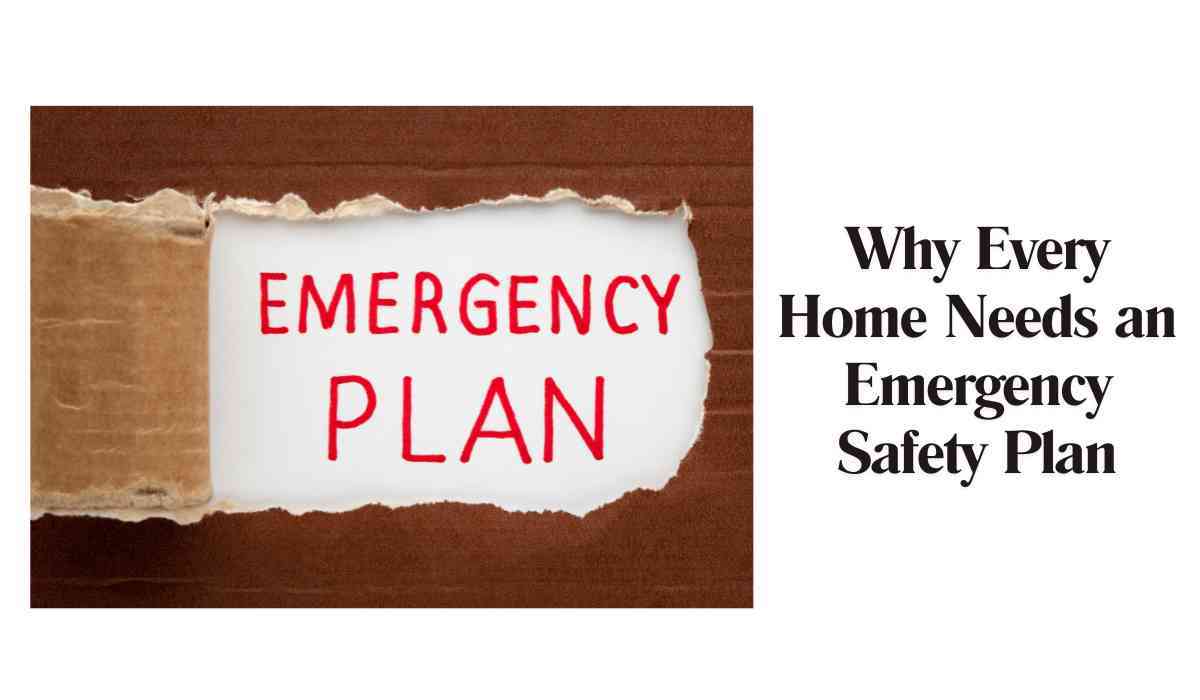
Why Every Home Needs an Emergency Safety Plan
Emergencies rarely come with a warning. Whether it’s a house fire, flood, earthquake, severe storm, power outage, or a medical emergency, being unprepared can turn a dangerous situation into a devastating one. That’s why having a clear and practical emergency safety plan isn’t just a recommendation—it’s a necessity.
At SimpliInsured, we know that protecting your home isn’t just about having the right insurance—it’s also about having the right plan. A well-thought-out emergency safety plan helps protect your family, minimize property damage, and speed up recovery. In this article, we’ll guide you through everything you need to know to create a smart and effective plan.
What Is an Emergency Safety Plan?
An emergency safety plan is a documented set of procedures that helps households respond to potential emergencies. It includes evacuation routes, emergency contacts, communication strategies, location of safety equipment, and more.
It’s designed to answer one question: “What will we do if something goes wrong?”
Without a plan, you may be left panicked, disorganized, and unable to make smart decisions quickly. But with a plan, you can stay calm, act fast, and stay safe.
Why You Absolutely Need One
1. 🧠 Reduces Panic and Confusion
In an emergency, seconds count. A well-defined plan helps family members know what to do and where to go—reducing stress, indecision, and panic.
2. 🛡️ Increases Safety for Everyone
From children and seniors to pets and visitors, a plan ensures every household member is accounted for. Clear escape routes, assigned roles, and emergency protocols save lives.
3. 🏚️ Minimizes Property Damage
An emergency plan often includes steps to shut off utilities, grab important documents, and secure valuable items. These small actions can prevent additional damage or loss.
4. 📞 Keeps Families Connected
Disasters can quickly separate family members. A communication plan—knowing who to call, what numbers to dial, and where to meet—keeps everyone informed and reassured.
5. 📋 Supports Quicker Insurance Claims
With a documented plan, including an inventory of valuables and safety actions taken, you’ll have smoother communication with your insurer (like us at SimpliInsured!) when filing a claim.
Key Components of an Emergency Safety Plan
Creating a plan can seem overwhelming, but breaking it down into clear sections helps ensure nothing is missed.
1. 🏡 Risk Assessment
Start by identifying the threats most likely to affect your home. Consider:
-
Natural disasters: flood, wildfire, tornado, hurricane, earthquake
-
Man-made emergencies: fire, gas leak, home intrusion
-
Utility disruptions: power outage, water shutdown, internet loss
-
Health-related emergencies: medical incidents, pandemics
Tailor your plan to the risks relevant to your home’s location and structure.
2. 🚪 Evacuation Plan and Exit Routes
Map out multiple evacuation routes for each room in your home. Include:
-
Clearly marked exits (doors, windows)
-
Paths to the safest place outside the home
-
A designated family meeting point (outside and, if necessary, offsite)
-
Plans for mobility-impaired family members
Post this map in a visible location—especially in children’s rooms and common areas.
3. 📞 Emergency Contact List
Ensure every family member has access to a current list of:
-
Local emergency services (police, fire, ambulance)
-
Poison control
-
Family doctors and nearby hospitals
-
Emergency contacts (relatives, neighbors, friends)
-
Out-of-town contact (someone outside the area who can coordinate updates)
Store these numbers in phones, post them on the fridge, and include a printed copy in your emergency kit.
4. 🎒 Emergency Supply Kit
Every home should have at least one stocked emergency kit. Essentials include:
-
Bottled water (one gallon per person per day for 3 days)
-
Non-perishable food (3-day supply minimum)
-
First-aid kit (with medicines, bandages, disinfectants)
-
Flashlights and extra batteries
-
Phone chargers and a power bank
-
Blankets and clothing
-
Whistle (to signal for help)
-
Personal hygiene supplies
-
Important documents (copies of ID, insurance, prescriptions)
Bonus: Keep a smaller, portable version of the kit in your car.
5. 🐶 Plan for Pets
Pets can be overlooked during emergencies. Make sure your plan includes:
-
Leashes, carriers, or crates
-
Pet food and water bowls
-
Vaccination and medical records
-
Photos of your pets in case they’re lost
-
Contact details for a pet-friendly shelter or hotel
6. 💬 Family Communication Strategy
If you get separated or cell networks go down, have a strategy in place:
-
Choose an out-of-town contact person every family member can check in with.
-
Set a backup meeting place if your home isn’t accessible.
-
Practice sending SMS messages or emails when voice calls fail.
-
Teach children how and when to call 911.
7. 🧯 Home Safety Equipment
Ensure you have functioning and accessible:
-
Smoke detectors and carbon monoxide alarms
-
Fire extinguishers on every floor
-
Flashlights (not just your phone flashlight)
-
Emergency ladder (for second-story escape)
-
Generator or solar-powered charger
Test your equipment regularly and replace expired items.
8. 🔁 Practice and Review the Plan
Even the best plan won’t work if no one remembers it. Schedule regular drills:
-
Fire escape practice every 6 months
-
Shelter-in-place exercises
-
Emergency contact refreshers
-
Kit inventory checks
Update the plan whenever your household changes (new family member, new pets, change of address).
SimpliInsured’s Role in Emergency Planning
At SimpliInsured, we believe preparation is protection. That’s why we not only provide reliable home insurance—we also advocate for smart safety planning that complements your coverage.
With SimpliInsured, you get:
-
Coverage tailored to your risk area
-
Faster claims processing when disasters strike
-
Expert advice on what documents to save and how to prepare
-
Peace of mind knowing your plan is backed by trusted protection
